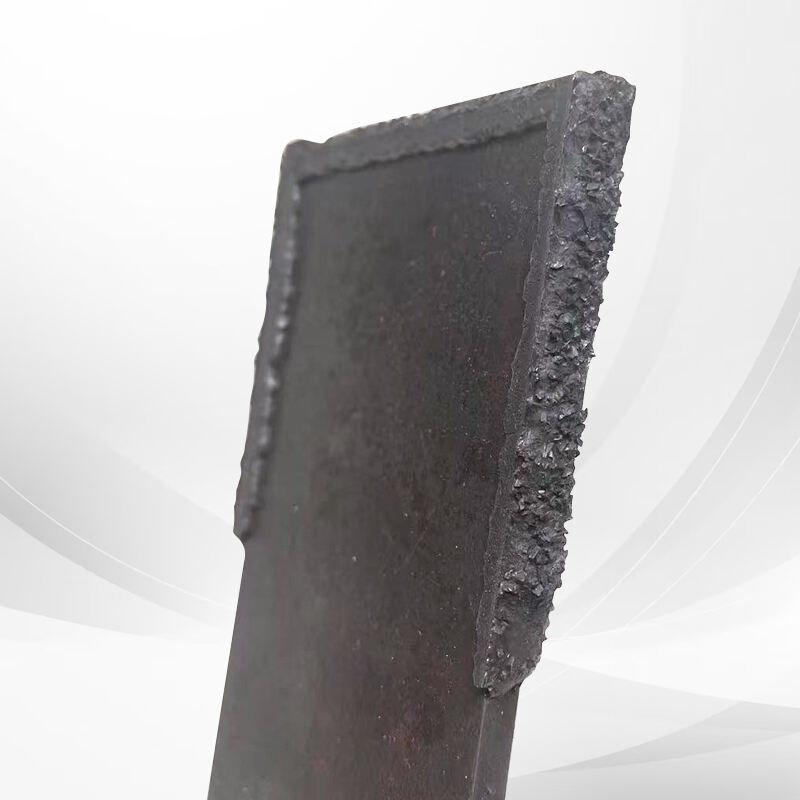Essential Maintenance Practices for Industrial Crushing Equipment
The performance and longevity of your hammer blade directly impact your operation's efficiency and bottom line. Whether you're managing a recycling facility, running a mining operation, or overseeing a construction waste processing plant, proper maintenance of your hammer blade equipment is crucial. Understanding the fundamentals of hammer blade care not only extends the life of your crushing equipment but also ensures consistent production quality and reduces unexpected downtime.
Modern hammer blade systems represent a significant investment in your operation, and their maintenance requires a comprehensive approach. From regular inspections to proper cleaning protocols, each aspect of maintenance plays a vital role in maximizing the service life of these essential components. Let's explore the proven strategies that industry professionals use to keep their hammer blade equipment operating at peak performance.
Preventive Maintenance Strategies
Regular Inspection Protocols
Implementing a systematic inspection routine for your hammer blade system is fundamental to preventing major issues before they develop. Daily visual checks should focus on identifying signs of wear, unusual patterns, or potential stress points. Pay particular attention to the mounting points and striking surfaces of the hammer blade, as these areas typically experience the highest stress levels during operation.
Document all inspections thoroughly, noting any changes in blade appearance or performance. This documentation creates a valuable historical record that helps identify wear patterns and optimize maintenance schedules. Professional operators recommend photographing wear patterns to track progression over time, enabling more accurate predictions of when replacement or servicing will be necessary.
Cleaning and Debris Management
A clean hammer blade is essential for optimal performance and longevity. Develop a regular cleaning schedule that removes accumulated debris, dust, and processed material residue. Use appropriate cleaning solutions and tools that won't damage the blade's surface or compromise its structural integrity. Pay special attention to areas where material tends to build up, as these spots can lead to uneven wear and reduced efficiency.
Consider implementing a systematic cleaning protocol that includes both daily quick cleans and more thorough weekly maintenance sessions. This two-tier approach ensures that immediate concerns are addressed while also preventing long-term buildup that could affect performance.

Performance Optimization Techniques
Material Processing Considerations
Understanding how different materials affect your hammer blade performance is crucial for optimization. Different materials create varying levels of stress and wear patterns on the blade surface. Adjust your processing techniques based on material characteristics to minimize unnecessary strain on the equipment. For instance, when processing harder materials, consider reducing feed rates to prevent excessive impact stress on the hammer blade system.
Monitor and record how different materials affect blade wear rates and adjust your maintenance schedule accordingly. This data-driven approach allows for more precise planning of maintenance intervals and helps prevent premature wear or failure.
Operating Parameters Adjustment
Fine-tuning your hammer blade operating parameters can significantly extend equipment life. Monitor and adjust rotation speeds, feed rates, and gap settings based on material type and desired output specifications. Regular calibration of these parameters ensures optimal performance while minimizing unnecessary stress on the equipment.
Keep detailed records of parameter adjustments and their effects on output quality and blade wear. This information becomes invaluable for developing optimal operating procedures for different materials and conditions.
Advanced Maintenance Procedures
Surface Treatment and Coating
Modern surface treatments and coatings can significantly enhance hammer blade durability. Consider applying specialized wear-resistant coatings that protect against abrasion and impact damage. These treatments can extend blade life by creating an additional protective layer that shields the base material from wear and corrosion.
Work with qualified professionals to select and apply appropriate surface treatments based on your specific operating conditions and material processing requirements. Regular monitoring of coating condition helps determine optimal reapplication intervals.
Precision Alignment and Balancing
Maintaining proper alignment and balance of your hammer blade system is crucial for optimal performance and longevity. Regular checks and adjustments of mounting points, rotation alignment, and overall system balance help prevent uneven wear and reduce vibration-related stress. Consider using laser alignment tools for maximum precision during adjustment procedures.
Schedule professional balancing services at regular intervals to ensure optimal performance and minimize equipment stress. This proactive approach helps prevent catastrophic failures and extends overall system life.
Frequently Asked Questions
How often should hammer blade equipment be inspected?
Professional operators recommend daily visual inspections and more thorough weekly examinations. Additionally, comprehensive professional inspections should be conducted quarterly or based on operating hours, depending on usage intensity and materials processed.
What are the signs that a hammer blade needs replacement?
Key indicators include uneven wear patterns, decreased processing efficiency, unusual vibrations or noise, visible cracks or chips, and measurement readings that fall outside manufacturer specifications. Regular monitoring of these factors helps determine optimal replacement timing.
How can I maximize the lifespan of my hammer blade equipment?
Maximize equipment life through regular maintenance, proper cleaning, optimal operating parameter settings, and appropriate material processing techniques. Additionally, implementing a comprehensive maintenance schedule and working with qualified service providers ensures the best possible performance and longevity.
What role does temperature play in hammer blade maintenance?
Temperature monitoring is crucial as excessive heat can affect blade hardness and wear resistance. Maintain proper cooling systems, avoid overloading, and monitor operating temperatures regularly. Implement appropriate cooling periods during intensive processing to prevent heat-related stress and damage.
